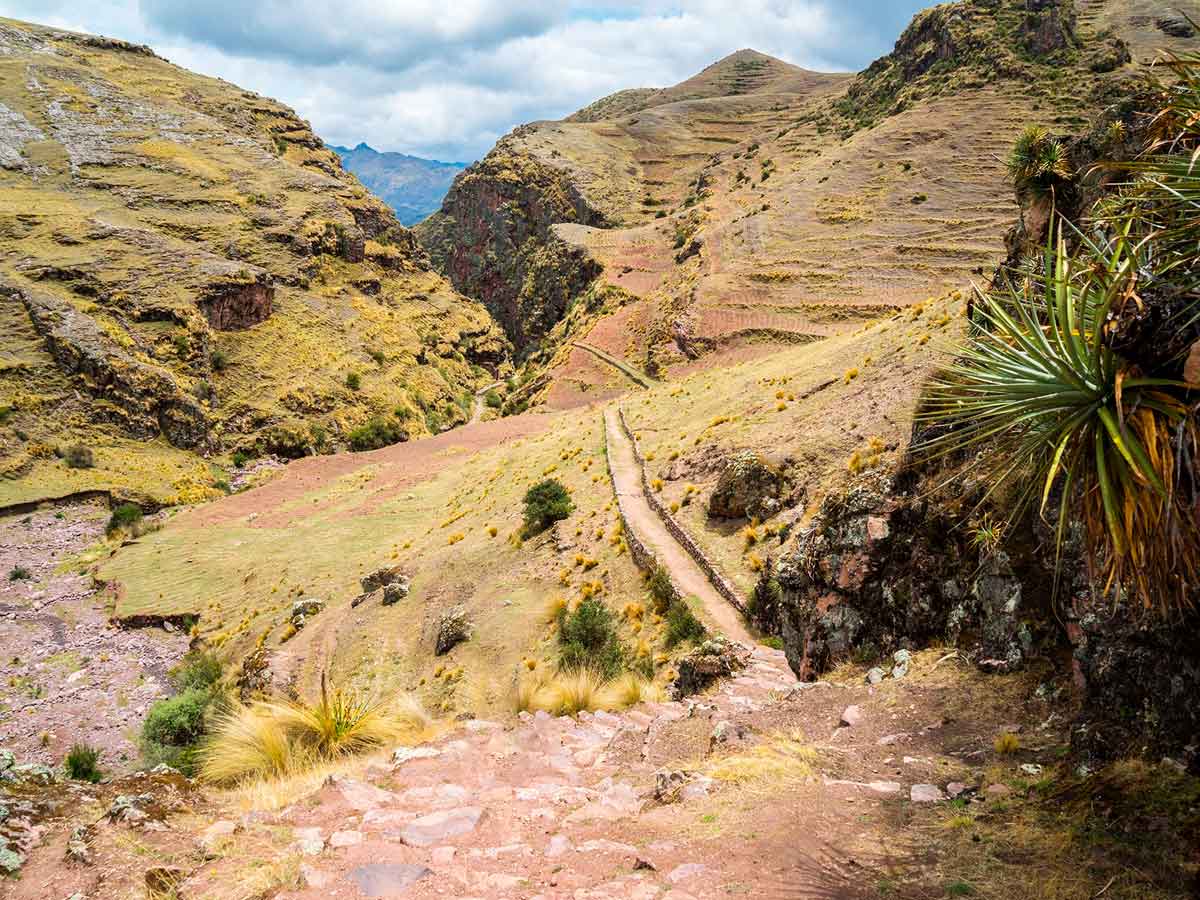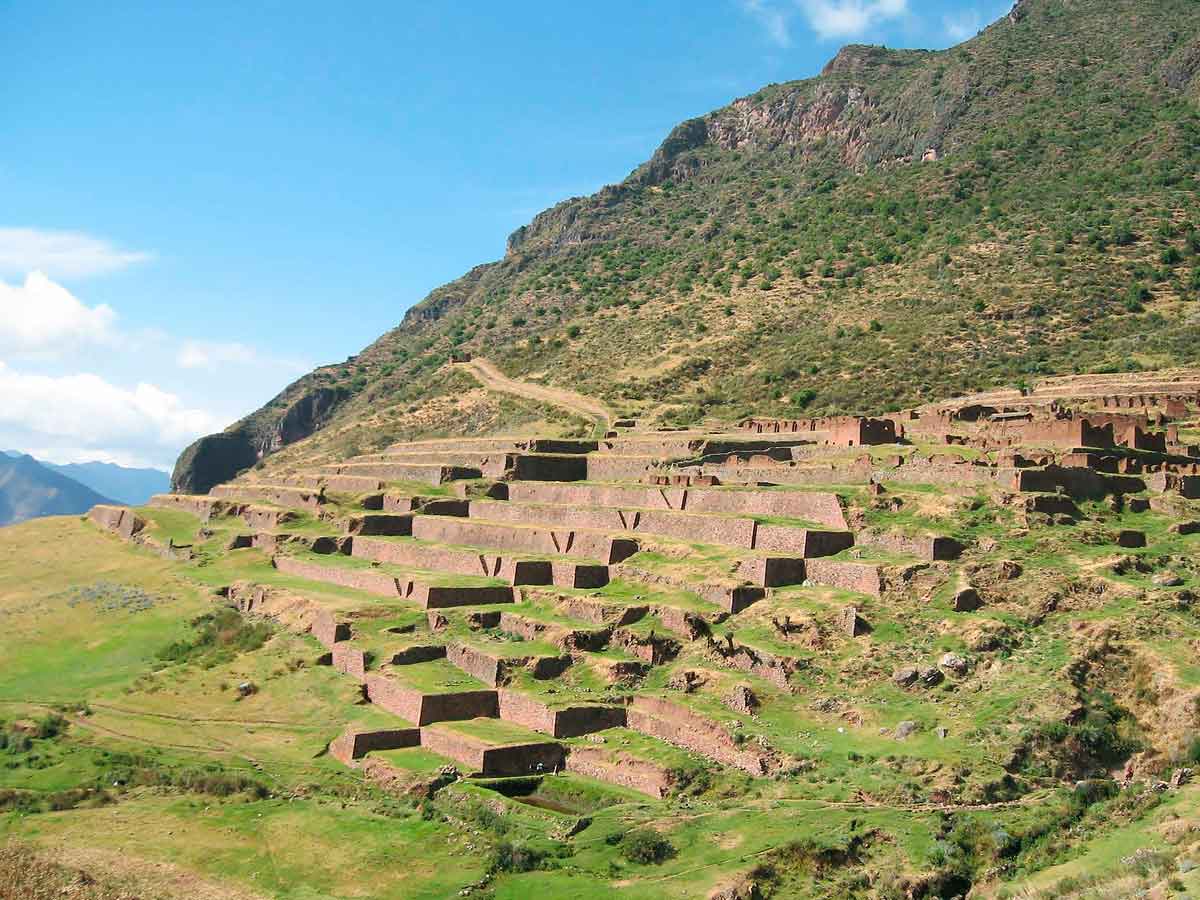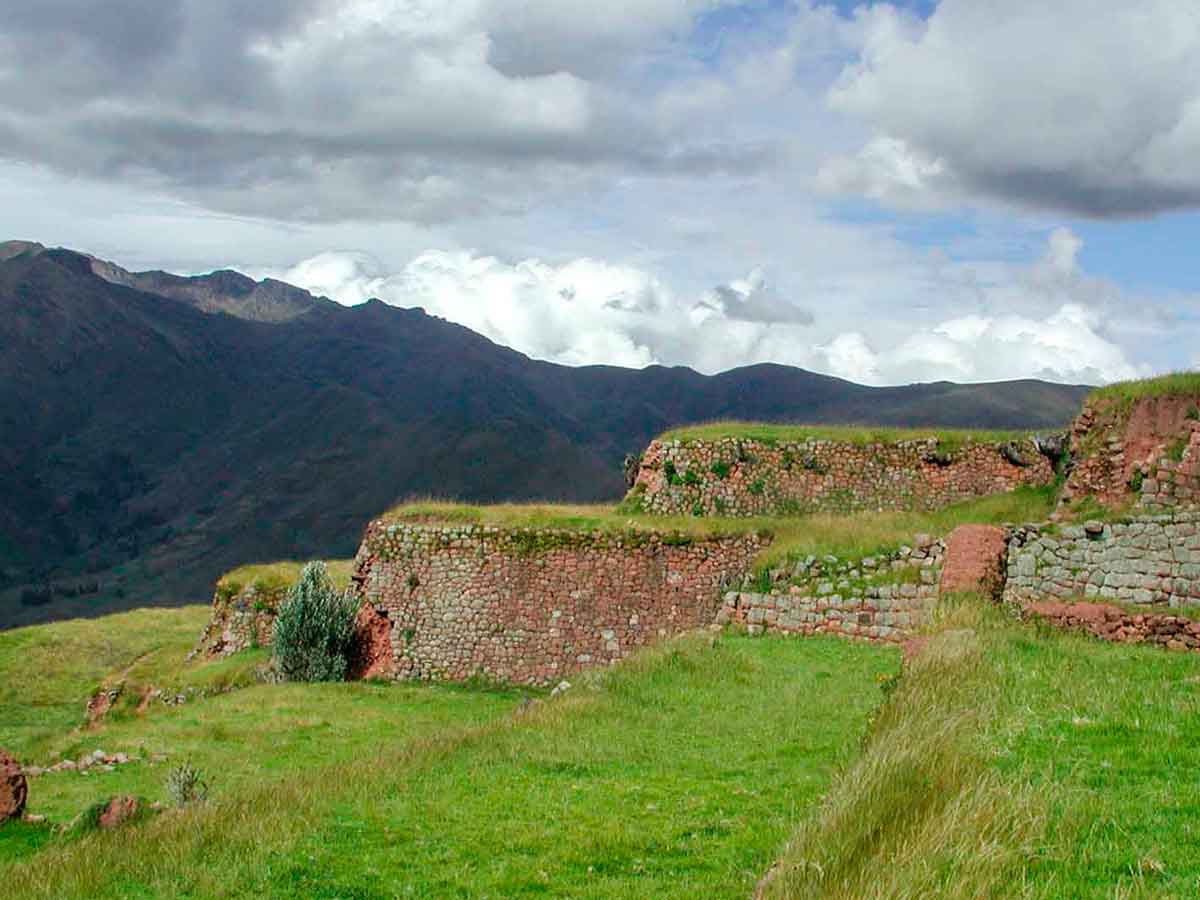
Huchuy Qosqo was a town located at more than 3,550 m.a.s.l on a small plateau at the top of a mountain. From here you can take beautiful views of the other side of the valley, it is possible to appreciate snow-capped mountains of exuberant beauty such as the snow-capped Pitusiray and at the bottom of this privileged view, the town of Calca. It is known by the chroniclers that it was the Inca Wiracocha who ordered the construction of the city of Huchuy Qosqo; it is said that in his old age, he felt tired and wished to leave the government and move away from the movement of the capital of the Tahuantinsuyo empire (Cusco) and seek peace and tranquility in this place; it is built on a territory occupied by several human settlements, over time, these would be dominated and incorporated into the empire of the Incas. One of these settlements must have been on Huchuy Qosqo.
Huchuy Qosqo is located in the peasant community of the same name, just under 5 km from the city of Calca in the department of Cusco, in the Sacred Valley of the Incas; exactly on a summit at 570 m. on the basin of the Urubamba river (Vilcanota). Huchuy Qosqo route is very beautiful; touring its trails will allow you to visit some Andean communities, archaeological centers and enjoy beautiful landscapes. Many people take advantage of visiting Huchuy Qosqo on their trip to Machu Picchu.

Huchuy Qosqo means "Little Cusco", but it also has other names; one would be Qaqyaxaqixawana and another Qaqyaqhawana, this means "from where the rays are observed"; and without a doubt it is a good name since being 800 meters above the Sacred Valley of the Incas, gives you the opportunity to see the dramatic spectacle of lights and sound, at the moment when lightning and thunder descend from the sky to crash into the floor. Others say that the site was probably known in Inca times as "Caquia Jaquijahuana".
The enclosure located in Huchuy Qosqo, is called Qaqyaqawana; Quechua name that refers to the place where the thunder is looking. This archaeological site is located in the upper third of the mountain called Qaqya (thunder), and exhibits one of the most impressive works of topographic modification through the use of terraces, modulating the edges of precipices and vertical ravines over the Vilcanota Valley, culminating in platforms that were used as ceremonial esplanades, around which you can still find standing, several architectural structures made of stone and adobe. Materials used and worked with great criteria, achieving a fine finish. In addition, the structures of the enclosure are distributed in such a way that they resemble it architecturally to the city of Cusco; is for this reason that at the beginning of the 20th century it receives the name of Huchuy Qosqo (small Cusco). One of the most outstanding features of this archaeological site is the use of lithic material combined with adobe and mud. This demonstrates the knowledge and mastery of the different construction materials, used with high technology, especially the adobe; the walls constructed of this material, with centuries of antiquity, still defy the strong inclemencies climatic of the zone, seismic movements and of course the passage of time.
Here is a list of what you can see in Huchuy Qosqo; at the moment no ticket is needed, or pay to enter Huchuy Qosqo.
Often disregarded in favor of the more renowned ruins of the Sacred Valley, Huchuy Qosqo is an Incan archaeological site situated north of Cusco in close proximity to the town of Lamay, which remains relatively unexplored by most tourists. Access to the ruins can be obtained through two potential hiking routes: a strenuous 3-mile round trip hike from Lamay with an elevation gain of 2,200 feet, or a 9.5-mile one-way trek from Chinchero to Lamay with an elevation gain of 1,900 feet, known as the Huchuy Qosqo Trek.

This article will concentrate on the second option, the classic Huchuy Qosqo Trek. The Huchuy Qosqo Trek commences near the small town of Chinchero and covers almost 10 miles one-way to Lamay, passing by the Huchuy Qosqo ruins in route.
The difficulty of the Huchuy Qosqo Trek in Peru can vary depending on several factors, including your level of fitness, altitude acclimatization, and the weather conditions during your hike. Here are some key points to consider:

The optimal period for embarking on a hike to Huchuy Qosqo is during the autumn, winter, and spring seasons, spanning from April to November. The summer months, from December to March, are characterized by Peru's rainy season, and it is therefore advisable to refrain from visiting during this time to ensure favorable weather conditions.
Our personal experience of hiking during the fall season was enhanced by the breathtaking sight of the wildflowers in full bloom. We can only envision the vibrant hues that adorn the trail during the spring season.